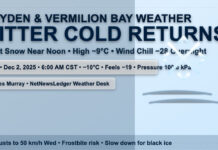
The year was marked by severe drought and a prolonged bushfire season, with dry conditions expected to persist in coming months
- Nine of past 10 years were Australia’s hottest on record
- Top temperatures in 2018 were second-warmest on record
- Annual rainfall was seventh lowest
- Hot, dry conditions expected to persist over next 3 months
By Sonali Paul
MELBOURNE – WEATHER – (Reuters) – Australia had its third warmest year on record in 2018, a year marked by severe drought in parts of the country and a prolonged bushfire season, the Bureau of Meteorology said, with the dry conditions expected to persist in coming months.
Maximum temperatures across Australia were the second-warmest on record at 1.55 degrees C (2.8 degrees F) above average, just behind the hottest year in 2013.
The average temperature across Australia in 2018 was 1.14 degrees C above the average for 1961 to 1990, making nine of the past 10 years hotter than average, the bureau said in its annual climate statement.
Annual rainfall was the seventh lowest on record over the southeastern quarter of the country.
“It was a tough year for people dealing with the drought,” Bureau senior climatologist Lynette Bettio said in a statement.
The bureau sees little change in the near term.
“The next three months look like a continuation of the warm and dry conditions that we’ve seen actually over the last 24 months or so,” Karl Braganza, the bureau’s head of climate monitoring told reporters.
El Nino-like weather conditions that have prevailed in the Pacific Ocean could also suppress rainfall this year, although it was unclear yet how that would develop.
El Nino is usually associated with lower than usual rainfall in eastern Australia.
For 2018, Australia’s rainfall was 11 percent below the average for 1961 to 1990 at 413 millimetres (16.3 inches), which the bureau said was due to natural variability as well as climate change.
The warmer temperatures and a windy winter also meant more evaporation, which led to a rapid and intense drying of the landscape, the bureau said.
Global warming is largely to blame for Australia’s bushfire season tending to start earlier in spring and extending into autumn, as opposed to just being during the hottest months in summer, Braganza said.
“The shift in the seasonalities and the severity of the fire weather is largely driven by increases in surface temperature, and that, in turn, is related to global warming,” he said.
(Reporting by Sonali Paul; editing by Richard Pullin)






